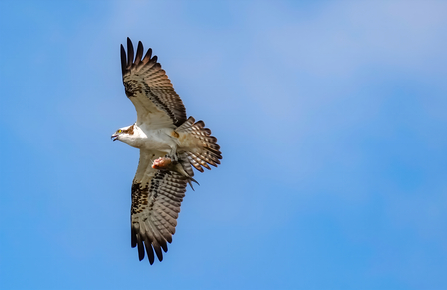The birds arrived at NWT Ranworth Broad nature reserve in April this year, making 2025 the third consecutive year that the site has welcomed a pair of osprey.
As soon as the male arrived at the start of April, he was seen in flight carrying sticks for nest building. Unlike previous years, this spring, the female arrived soon after the male – just a few days later. As sightings of feeding and mating behaviour were reported, a sense of excitement built as staff at the nature reserve realised that this could be a special year for osprey in the East.
The new arrivals were first confirmed as being in the nest on 20 June, spotted by Teala Leeder, Senior Visitor Centre Manager at Ranworth Broad.
Teala said: ‘I’ve been watching the pair of osprey flying back and forth to the nest over the last couple of weeks feeling very hopeful and excited, so getting my first glimpse of the chicks – and confirming our greatest hope – was just incredible.
It's so wonderful to welcome our new arrivals and it also gives visitors the chance to catch a glimpse of these impressive birds of prey and their young.’

